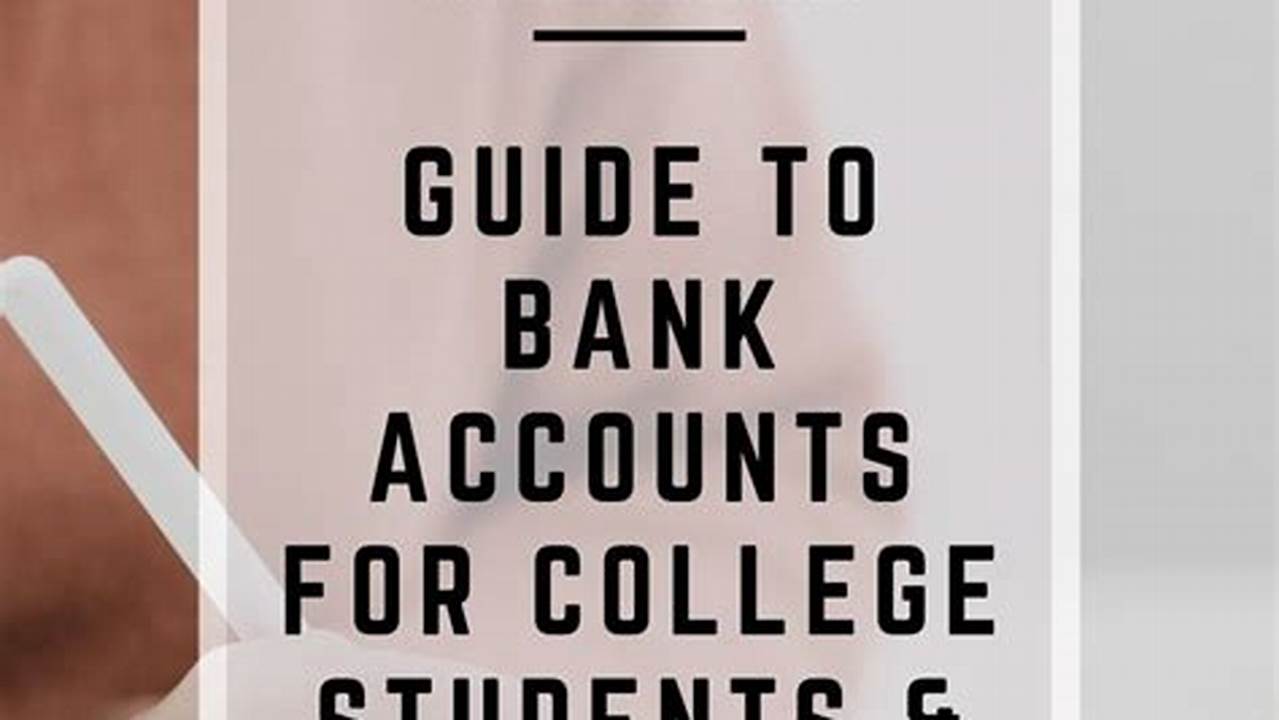Navigating the world of finance as a student can be daunting. Choosing the right financial institution and account type is crucial for managing expenses, building credit, and ensuring financial stability throughout college. A comprehensive guide to student banking and a selection of optimal account options are essential resources for students embarking on this journey.
Accessibility
Convenient access to funds through online banking, mobile apps, and a widespread ATM network is vital for students.
Low Fees
Minimizing monthly maintenance fees, overdraft charges, and ATM fees helps students keep more of their money.
Interest Rates
While often modest, even small interest rates on checking or savings accounts can contribute to financial growth over time.
Mobile Banking Features
Robust mobile banking apps facilitate easy account management, bill payments, and fund transfers on the go.
Customer Service
Reliable and responsive customer support can assist students with account inquiries and resolve any banking issues promptly.
Branch Availability
Physical branch locations offer in-person assistance for more complex banking needs or personalized financial advice.
Financial Education Resources
Banks that provide financial literacy resources, budgeting tools, or educational programs empower students to make informed financial decisions.
Debit Card Perks
Student-friendly debit cards may offer cashback rewards, discounts, or other perks that cater to student lifestyles.
Tips for Choosing a Student Bank Account
Research different banks and credit unions to compare account features and fees.
Read online reviews from other students to gauge their experiences with different banking institutions.
Consider your specific banking needs and prioritize features that align with your financial goals.
Don’t hesitate to contact banks directly to ask questions and clarify any doubts before opening an account.
Frequently Asked Questions
What are the common fees associated with student bank accounts?
Common fees include monthly maintenance fees, overdraft fees, ATM fees, and foreign transaction fees.
How can I avoid overdraft fees?
Track your spending, set up low-balance alerts, and consider overdraft protection options.
What is the difference between a checking account and a savings account?
Checking accounts are designed for everyday transactions, while savings accounts are intended for accumulating funds and earning interest.
Is online banking safe for students?
Reputable banks utilize strong security measures to protect online banking transactions. Choosing strong passwords and being cautious of phishing scams are essential for online safety.
How can I build credit as a student?
Responsible credit card use, student loans, and becoming an authorized user on a parent’s credit card can help build credit history.
Where can I find additional resources on student banking?
Financial literacy websites, consumer advocacy groups, and educational institutions offer valuable resources on student banking.
Selecting the appropriate banking partner is a significant step toward financial independence for students. By considering these factors and utilizing available resources, students can make informed decisions that contribute to their long-term financial well-being.



